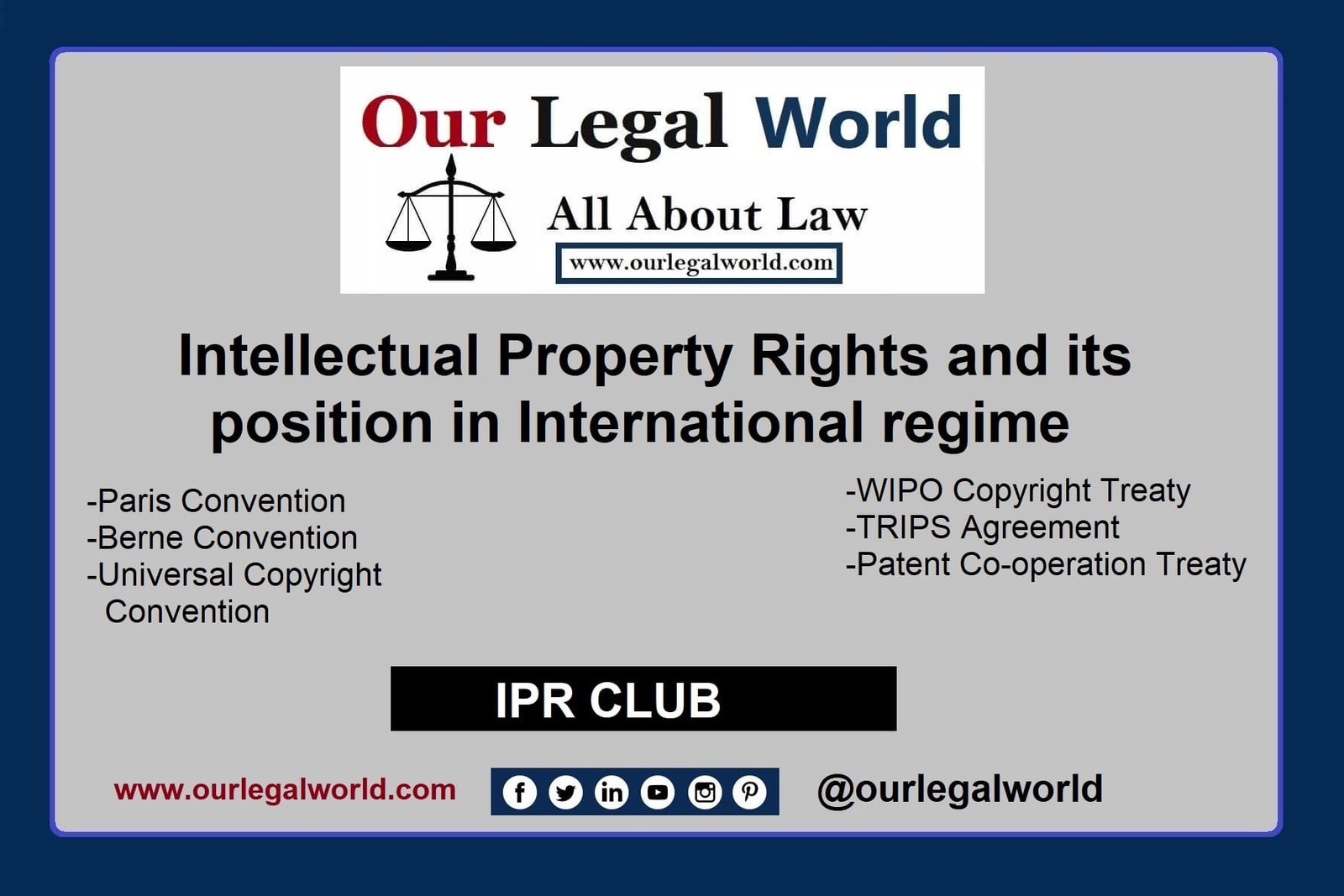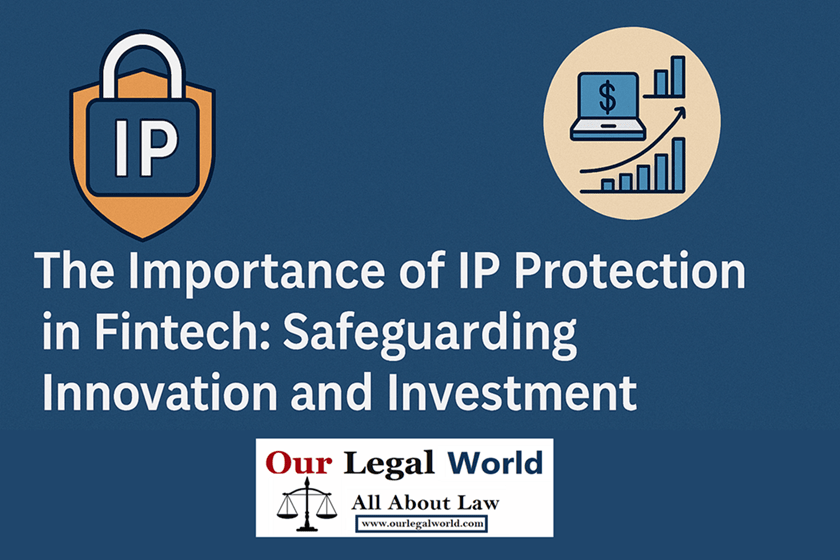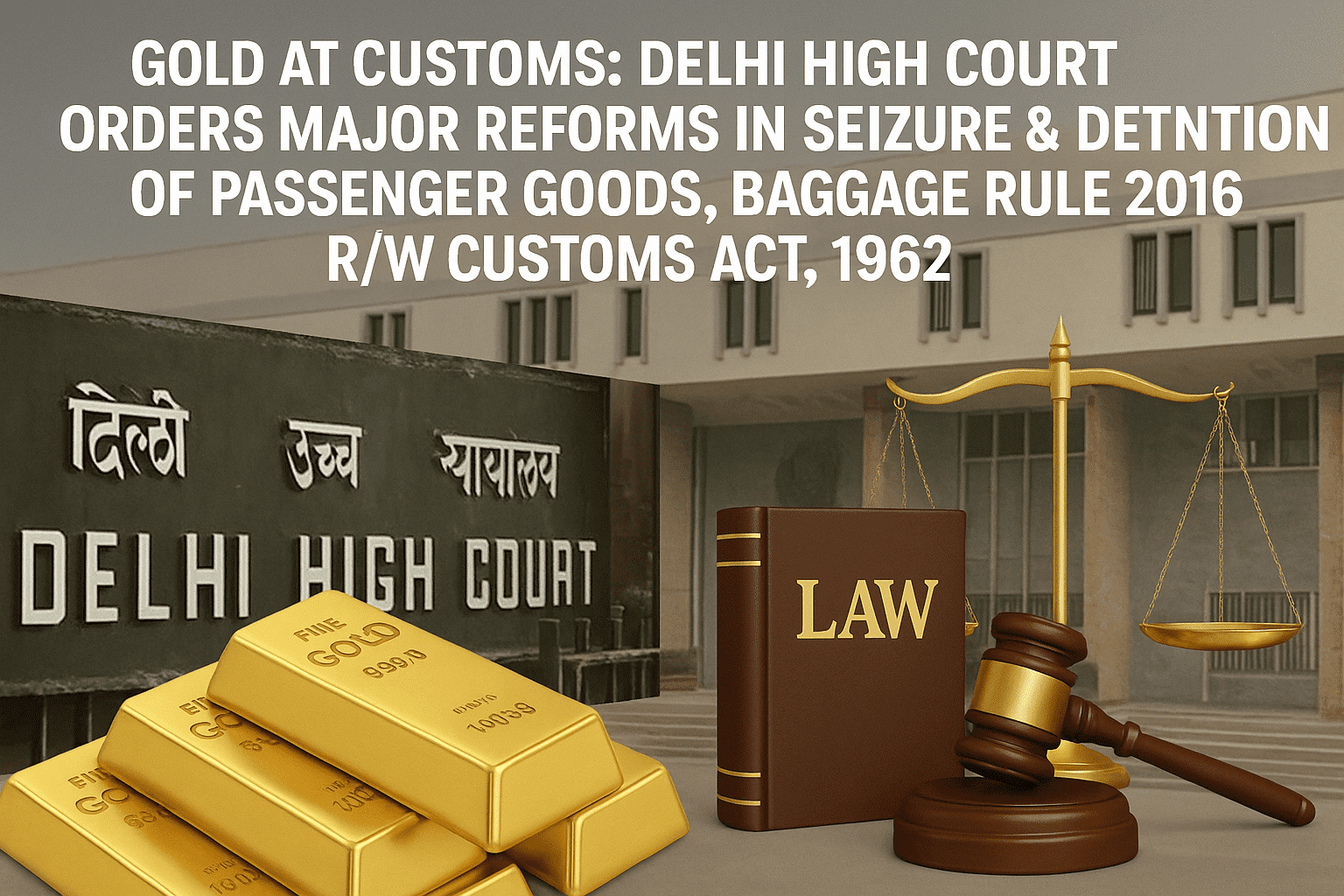Intellectual Property Rights and its position in International Regime
Intellectual property rights are the privileges people have over the works of their imagination. Typically, they grant the creator temporary exclusivity over the use of his or her own work. [1]
It is mostly classified into the following four categories: –
a) Copyrights: –
A minimum of 50 years after the author’s passing, copyright law protects the author’s rights to any literary and artistic creation, including books, other works, musical compositions, paintings, sculptures, computer programmes, and so forth. The rights of performers, including as actors, singers, and musicians, as well as those of makers of phonograms, such as sound recordings, and broadcasting organisations, are also protected by the copyright law. The basic goal of copyright law and related rights protection is to support and honour a person’s creative talent.
b) Trademark: –
This includes names that all brands use, logos, slogans, and other things that help consumers recognise, verify, or distinguish between various goods and services on the market. These are protected under trademark laws.
c) Publicity Rights: –
The right of publicity safeguards a person’s name and image; if either is used without authorization for commercial advantage, these rules provide protection against such actions.
d) Trade Secrets: –
Sensitive company information is considered a trade secret, and various trade secret laws provide protection for such information. Only when such information gives a company an advantage over its rivals, when it is kept a secret, and when rivals are ignorant of it, is it legally protected.[2]
The major goal is to protect the outcomes of investments in the creation of new technologies, providing the motivation and resources to finance such operations.
Technology transfer through foreign direct investment, joint ventures, and licencing should all be made easier by an effective intellectual property law. The protection is normally provided for a specific amount of time, such as 20 years in the case of patents.
Although the fundamental goals of intellectual property protection have already been mentioned, it is important to keep in mind that the exclusive rights granted are typically subject to a number of restrictions and exclusions designed to fine-tune the delicate balance between the legitimate interests of right holders and its users. Additionally, it guards against duplication. When opposed to traditional property, intellectual property is intangible, which raises more problems.
A creator of information or intellectual property can’t do much to prevent their idea from being copied and ultimately affecting their sales by being marketed at a lower price point. By enforcing its laws, the intellectual property right provides the inventor with unrestricted protection and treats intellectual property exactly like any other type of traditional property.[3]
Intellectual property in developed and developing countries: –
The United States, the European Union, Japan, South Korea, and Singapore are nations with robust intellectual property rights. Because of the stark disparity in intellectual property rights between developed and developing countries, which was established by being a signatory to the Trade-Related Aspects of Intellectual Property (TRIPS) Agreement at the WTO, they all need to step up their efforts to create a strong international framework of intellectual property rules, regulations, norms, etc.
False claims about intellectual property are made by those who question it in an effort to deceive and demonstrate that doing so only serves to benefit large corporations, developed nations, and other powerful entities. Therefore, it is essential for the global community to reach a firm and complete understanding or agreement on how each country, whether developed or developing, should regard intellectual property. Nations with a robust network of intellectual property rights should cooperate with one another in order to defeat their adversaries and demonstrate that intellectual property can be a tool for global advancement. Such significant changes can fuel a slow but steady decline in intellectual property rights worldwide, international trade and intellectual property rights interact. Cross-border exchanges of commodities, services, and capital are examples of this nexus in action.[4]
International regime of Intellectual Property Laws: –
Any commodity is now traded and bought and sold on a worldwide scale. This is also true of intellectual property. We must therefore comprehend the legal system that oversees intellectual property and ensures its protection on a global scale. This system serves as the cornerstone for all trade, whether it is domestic or international.
a) The Paris Convention on the Protection of Industrial Property: –
In 1833, this convention came to an end. It was the first worldwide law that protected industrial innovation patents. About 30 articles in the treaty deal with many facets and varieties of industrial property, such as utility models, trademarks, service marks, and the suppression of unfair competition. In Stockholm, Sweden, in July 1967, the convention was changed.
b) Patent Co-operation Treaty, 1970: –
The Patent Co-operation Treaty (PCT) was signed on June 19, 1970, and it became operative on January 24, 1978. The pact intends to streamline the application process for patents in states that have signed on as parties.
c) Berne Convention for Protection of Literary and Artistic Works, 1886: –
The most important international convention governing copyright protection is the Berne Convention for the Protection of Literary and Artistic Works, which was adopted in 1886. It stipulates a minimum period of copyright protection, which is the author’s lifetime plus 50 years following the publishing of anonymous and pseudonymous works.
d) Universal Copyright Convention, 1952: –
The United Nations Educational, Scientific and Cultural Organization (UNESCO) produced the Universal Copyright Convention (UCC) as a replacement for the Berne Convention of 1886. In 1955, the Convention became operative. The Convention is founded on the idea of national treatment and calls on each signatory nation to uphold particular minimal legal protections for copyright.
e) Rome Convention for the Protection of Performers, Producers of Phonograms and Broadcasting Organisations, 1961: –
The Rome Convention provides producers of phonograms and broadcasts by broadcasting organisations with protection in relation to performances for performers in phonograms. The Convention was finalised in 1961, and on May 18, 1964, it went into effect. It provides performers with protection if their performance occurs in another contracting state by, for example, forbidding the performance from being broadcast without permission.
Also Read: THE DATA PROTECTION AND IPR-RELATED ASPECTS OF THE DRAFT E-COMMERCE POLICY
f) WIPO Copyright Treaty, 1966: –
Under the Borne Convention, the WIPO Copyright Treaty (WCT) is a specific agreement that ensures the rights of writers and the protection of works in the digital sphere.
g) Hague Agreement concerning the International Deposit of Industrial Design, 1925: –
The Hague Agreement concerning the International Deposit of Industrial Designs, 1925, as revised in 1960, aims to make it easier for industrial designs to be protected internationally by allowing for a single deposit with the WIPO’s International Bureau and avert any violations by other member countries.
h) World Intellectual Property Organisation (WIPO): –
WIPO is a global platform for intellectual property (IP) services, policies, information, and cooperation that was founded on July 14th, 1967. It seeks to create an efficient and balanced global IP system that supports originality and creativity for the good of all. The 193 member states of WIPO.
i) TRIPS Agreement: –
An international multilateral agreement that deals with the protection of intellectual property rights is the WTO Agreement on Trade-Related Aspects of Intellectual Property Rights (TRIPS), which was signed in 1994. The TRIPS Agreement acknowledges the significance of IP in international trade and offers a mechanism for resolving disputes and preventing them in the case of IP issues that are connected to trade. Each WTO member is obligated to adhere to the TRIPs requirements and offer a minimal level of IP protection in its national laws. [5]
Thus, these are the international aspects followed around the whole world related to Intellectual Property.
Conclusion: –
The fact that intellectual property is a “product of the mind” makes it harder for the inventor to assert ownership, but it is nonetheless regarded as a subset of traditional property like land because it is shielded from duplication by a number of state regulations. It is also evident that managing IP and IPR requires a variety of diverse activities and techniques, all of which must be in compliance with local, national, and international laws and conventions. It is no longer solely influenced by a national viewpoint. The market’s demands, its reaction, the expense of converting IP into a business enterprise, and other factors have a significant impact on IP and its related rights. In other words, the administration of IPR must take into account issues relating to trade and commerce. Distinct IPR forms necessitate different handling, planning, and strategies as well as the involvement of people with specialised understanding in fields like science, engineering, medical, law, finance, marketing, and economics. Depending on its area of specialisation, each industry should have its own IP rules, management practises, strategies, etc. A developing IP strategy is now used by the pharmaceutical business. Antitrust law must therefore intervene to prevent the wrongful assertion of invalid IPR in order to create and sustain illegitimate, if temporary, monopolies within the pharmaceutical business, given the greater likelihood that some IPR are illegal. In this context, there are still a lot of issues to be handled.[6]
Article written by Raghav Agarwal (Christ University, Pune, Lavasa)
[1] https://www.mondaq.com/india/trademark/844028/international-regime-of-intellectual-property-laws-and-its-importance-in-trade
[2] https://www.ncbi.nlm.nih.gov/pmc/articles/PMC3217699/
[3] https://www.itu.int/en/ITU-T/ipr/Pages/default.aspx
[4] https://stfrancislaw.com/blog/intellectual-property-rights/
[5] https://blog.ipleaders.in/all-about-intellectual-property-rights-ipr/#The_Paris_Convention_on_the_Protection_of_Industrial_Property
[6] https://www.mondaq.com/india/trademark/844028/international-regime-of-intellectual-property-laws-and-its-importance-in-trade







![Tax Law Internship at Legum Attorney [Chamber of Ashish Panday], Delhi : Apply by 15th May 2025](https://www.ourlegalworld.com/wp-content/uploads/2025/05/IMG_0113-min.png)

